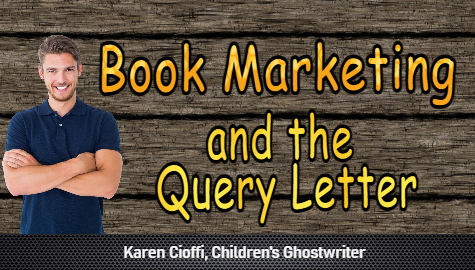If you are contemplating writing a book or you’ve already written one and intend on going the traditional publishing path, you’ll need a query letter and a cover letter.
This is true whether you’re an author, a writer, or a business owner who wants to build his authority with a book.
Wondering what a query letter has to do with book marketing?
The query is the second step in your book marketing journey. Think of it as the beginning of a hopefully rewarding relationship with a publisher or agent.
The first step is writing a great story. The second is getting a contract – this is where the query comes in.
If you’re not sure what a query letter is, Jane Friedman notes that it’s a stand-alone letter and has only one purpose. Its sole purpose is “to seduce the agent or editor into reading or requesting your work. The query is so much of a sales piece that you should be able to write it without having written a single word of the manuscript.” (1)
The query letter is your foot in the publishing door. So, you can see how much rides on this one or two page letter (preferably one page).
Here are 8 elements you should be aware of:
1. Do your research. Have you gone to the publisher’s or agent’s website to make sure your manuscript topic is something s/he handles?
You can do an online search for publishers or agents that will be a fit for your story. Or, you can use an online service, like WritersMarket.com.
I recommend you get Children’s Writer’s and Illustrator’s Market (current year).
2. Know what you need to do. At the site, did you carefully go over the submission guidelines? I mean really, really, really, carefully!
3. Is your opening (in the query) grabbing? Will it get the reader’s attention?
4. Edit, edit, edit. Have you checked for grammar errors? Have you checked for redundancy? How about spelling? Don’t rely on a word processors speck check feature alone. Edit your letter manually.
5. Keep it short and sweet. Eliminate non-essential personal information.
6. Include credentials, and/or pertinent background information, if any.
7. Include your book marketing strategy for promoting your book. In this section, include your social media following, only if significant: 500 followers, 1000 followers, 5000, 10,000. Obviously, the more the better. And, it’s essential that you have an author website and include the link in your heading.
8. Have you studied the query letter format?
The format consists of several paragraphs:
a. Your introduction, mentioning that you’ve visited the website and why you’re querying.
b. A very brief gist of what the manuscript is about and the intended age group.
c. A very brief synopsis of the story.
e. Your background, if pertinent. Include your marketing intentions.
f. Thank the editor/agent for her time. Mention that you included XXX pages (the number the guidelines said to send), if applicable.
Taking the time to do it right and write an optimized query letter may make the difference between the slush pile and a contract.
The query letter is the portal to a contract. If the reader says NO at the letter, you’re manuscript may be great, but it won’t have a chance.
MORE ON WRITING FOR CHILDREN
Children’s Ghostwriting Fees – Does Price Equal Quality?
Getting to Know Your Characters
Editing a Children’s Book – 10 Tips Checklist for Authors

I’m a working children’s ghostwriter, rewriter, editor, and coach. I can help turn your story into a book you’ll be proud to be the author of, one that’s publishable and marketable.
OTHER HELP I OFFER:
HOW TO WRITE A CHILDREN’S FICTION BOOK
A DIY book to help you write your own children’s book.
PICTURE BOOK, CHAPTER BOOK, MIDDLE GRADE COACHING
Four to twelve-week coaching programs.
FICTION WRITING FOR CHILDREN eCOURSE
writing-for-children-ecourse/
4-Weeks / 8 Sections Guided Self-Study Mentoring Program
You can contact me at: kcioffiventrice@gmail.com. Or give me a call at 347—834—6700. (Please leave a message- I’ll get back to you as soon as I can.)


2 thoughts on “Book Marketing and the Query Letter”